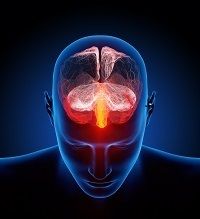Article
Migraine: Researchers Close to Finding Biomarker
Author(s):
Researchers are close to identifying reliable biological, genetic, and radiological biomarkers of migraine.

Researchers are close to identifying reliable biological, genetic, and radiological biomarkers of migraine, according to a recent study published in the International Journal of Neurological Disorders & Interventions. Robert Belvis, MD, of the Department of Neurology at the Dexeus University Hospital in Barcelona, Spain, and colleagues reviewed the existing data on biological, genetic, and radiological biomarkers of migraine, looking for new insights.
Their initial search for articles turned up 200 English abstracts, of which 58 were considered relevant. Biomarkers are important for different reasons. A static biomarker presents diagnostic information, while a dynamic biomarker changes and may show that a particular treatment is working. In the case of migraine, a static biomarker “can be useful as a confirmatory test of migraine in clinical practice in patients with clinical diagnostic doubts,” and a dynamic biomarker “is needed to provide accurate information about disease evolution.”
Several vasoactive neuropeptides could “become biological biomarkers of migraine.” The researchers focused on studies concerning calcitonin gene-related peptide (CGRP), vasointestinal peptide (VIP), and pituitary adenylate cyclase-activating polypeptide (PACAP). They also reviewed studies that included “the administration of prostaglandins, histamine and glyceryl trinitrate” which can “induce migraine attack in patients with migraine and in healthy controls.” They noted, however, that such experiments are controversial.
The study of migraine as a genetic condition began with studies of twins, then expanded to familial hemiplegic migraine (FHM). “Over the past few years, three genetic variations associated with FHM have been found: FHM1, FHM2 and FHM3,” according to the review. The researchers also examined linkage analyses studies, which “detect alleles with minor effects but with higher frequencies.” However, they note that “many results tend to be false positives and are not usually replicated in larger cohorts.”
When it comes to radiological biomarkers of migraine, less progress has been identified. “Pathological alterations that differentiate between the brain of migraine patients and healthy controls have not been reported.” Several studies have shown that “patients with migraine present white matter abnormalities in their brains more often than healthy controls” however, “their evolutionary course is controversial.” The researchers report that several regions of interest are being studied as possible radiological biomarkers.





